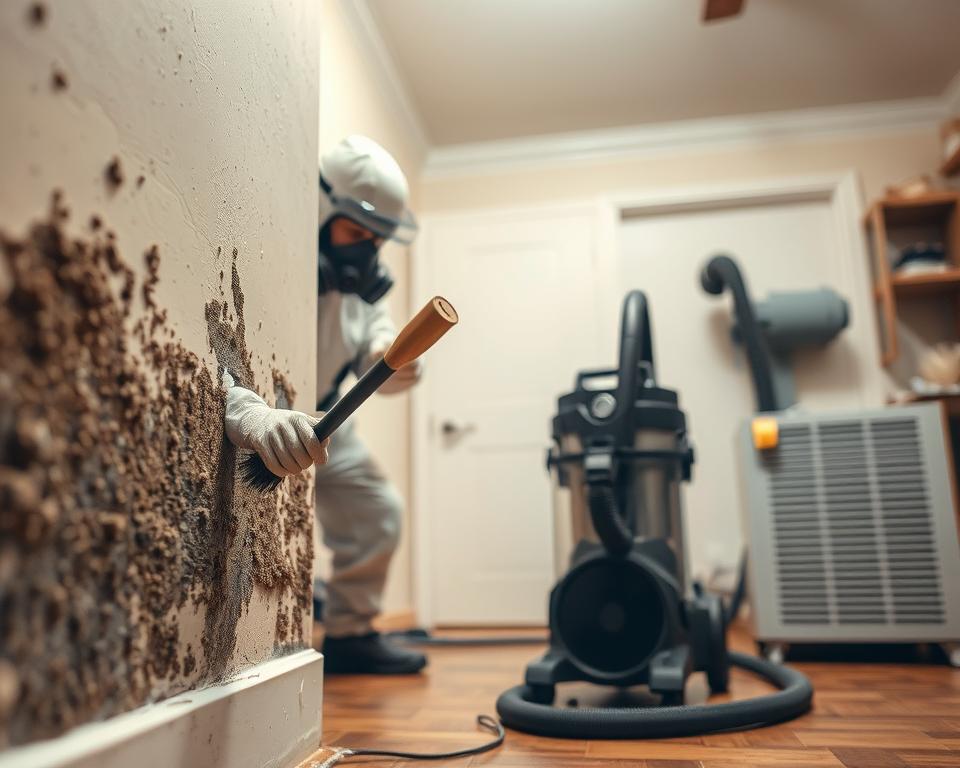Many people wonder about mold remediation in homes and businesses. They ask, “What is involved, and how can professionals help?” Mold spores are everywhere, indoors and outdoors. It’s impossible to get rid of all molds1.
Effective mold remediation needs several steps. This includes checking for mold and figuring out how to handle it. Each property is different, so solutions vary1.
The process of removing mold is more than just taking out the visible stuff. It also means cleaning and making things smell good again1. Knowing what mold remediation involves is key. It helps people choose the right professionals to do the job right and safely.
Key Takeaways
- Mold remediation is a complex process that requires professional attention to ensure safe and effective removal of mold.
- The mold removal process involves multiple steps, including inspection, assessment, and sanitization1.
- Professional mold remediation services are essential for ensuring the job is done correctly and safely.
- Mold growth can occur in just a few days due to moisture from water faults or high humidity levels, stressing the need for quick action1.
- Understanding what is involved in mold remediation can help homeowners and businesses make informed decisions when hiring professional mold remediation services.
- Mold spores can grow in any area that has moisture, increasing the risk of health problems and property damage if not addressed quickly2.
Understanding Mold Growth
Mold growth is common in homes and buildings. It happens due to moisture, humidity, and poor air flow3. Knowing why mold grows helps stop it and keeps us healthy.
Many types of mold can grow indoors. These include Aspergillus, Alternaria, and Cladosporium4. They can be found on walls, ceilings, and floors. To stop mold, we need to control moisture and air flow, and check for mold often5.
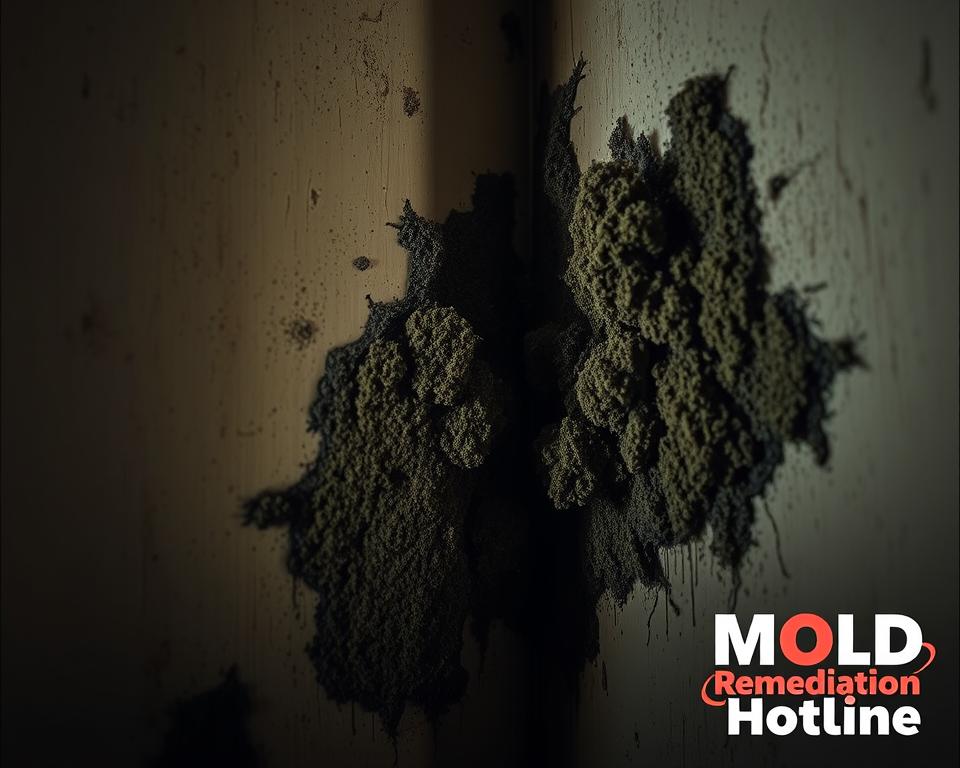
Understanding mold growth is key to stopping it. By managing moisture, improving air flow, and checking for mold, we can stay healthy indoors3.
Health Hazards of Mold Exposure
Mold exposure can be very harmful, mainly to those who are more vulnerable6. It can cause breathing problems, allergic reactions, and other health issues. People with weak immune systems might experience coughing, wheezing, and sneezing7.
Mold can grow on many things like wood, paper, and food8. To feel better, you need to reduce moisture and improve air flow. The elderly, young kids, and those with weak immune systems are at higher risk6.
Here are some important facts about mold exposure:
- Mold spores can grow anywhere there’s moisture, leading to health problems and severe damage to your home or business if not removed quickly6.
- Respir NavParams issues can affect 10-20% of the population exposed to mold, significantly impacting those with existing allergies or asthma6.
- Studies indicate that prolonged mold exposure can lead to the development of new allergies in about 30-50% of sensitive individuals6.
It’s very important to fix moisture problems fast to stop mold from growing8. By knowing the signs of mold and taking steps to stop it, you can keep yourself and your family safe7.
| Population | Risk Level |
|---|---|
| Elderly | High |
| Young Children | |
| People with compromised immune systems | High |
Mold Assessment and Inspection
Finding and fixing mold is key. It starts with a detailed check and air quality tests9. First, we look closely, check for moisture, and test the air10. This helps find hidden water that can cause mold in walls, floors, or wood11.
Testing the air inside can find mold and other stuff like dust and pollen11. We use special tools to measure moisture and air quality. Here are the main steps:
- Look around for mold and water damage signs
- Check for hidden moisture with special tools
- Test the air to see if there’s mold or other stuff
Mold checks need experts and special tools. Fixing mold can cost $500 to $6,0009. A good check helps find and fix mold, keeping you and your home safe.
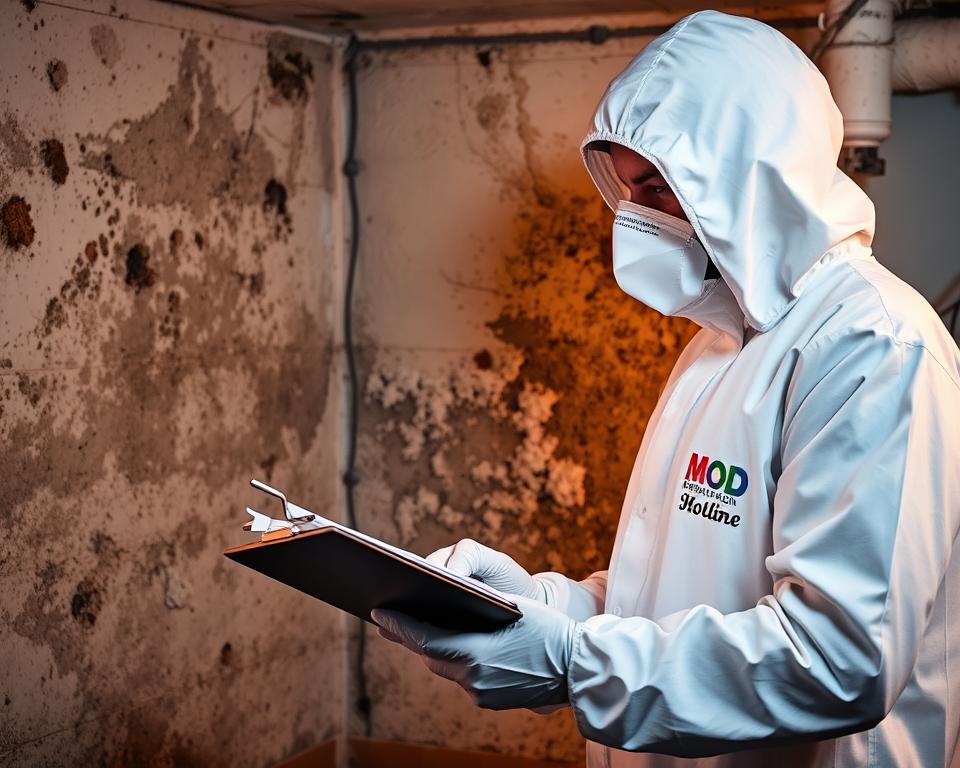
| Step | Description |
|---|---|
| 1. Visual Inspection | Find mold and water damage signs |
| 2. Moisture Meter Testing | Find hidden moisture in walls, floors, or wood |
| 3. Air Quality Testing | Find mold and other stuff in the air |
Remediation Process Overview
The remediation process is key to fixing mold problems. It starts with initial containment to stop mold spores from spreading12. This step can take one to five days, based on the mold’s severity and where it is12.
The goal is to safely remove moldy stuff like drywall and carpeting. This stops mold from coming back13.
Experts use special methods to keep mold spores from spreading. They seal off areas and cover them with plastic12. Removing moldy materials is also important to get rid of the mold’s source13.
They might also use special sprays to stop mold from growing back. Fans or dehumidifiers help dry out areas after mold is removed12.
Mold can grow anywhere there’s moisture. It likes bathrooms, basements, and kitchens14. Keeping humidity low and cleaning often helps stop mold14.
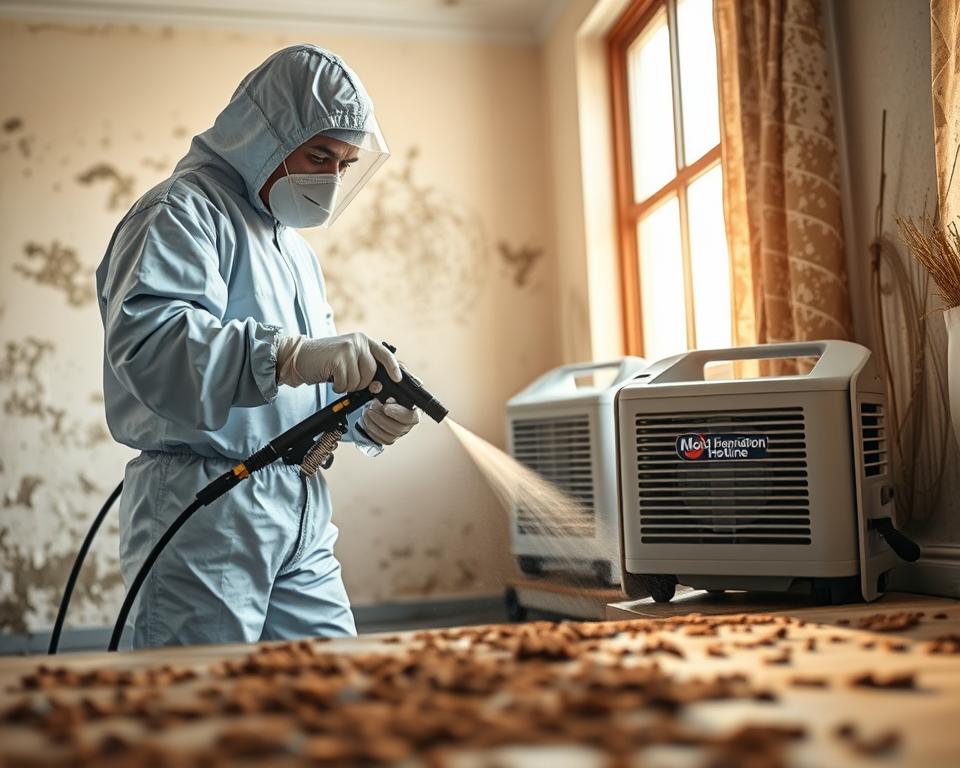
Cleaning and Disinfecting Surfaces
Cleaning and disinfecting is key in stopping mold spread. It makes sure our places are safe and healthy15. We use EPA-approved cleaners and special sprays to get rid of mold16.
Choosing the right tools is important. HEPA vacuums catch tiny mold spores15. Wearing masks helps keep us safe from mold16.
Bleach and water mix can kill mold well16. But, we must follow the instructions carefully. This means letting it sit for 10 minutes16.
Using fans and dehumidifiers helps dry things out. This makes it hard for mold to grow17.
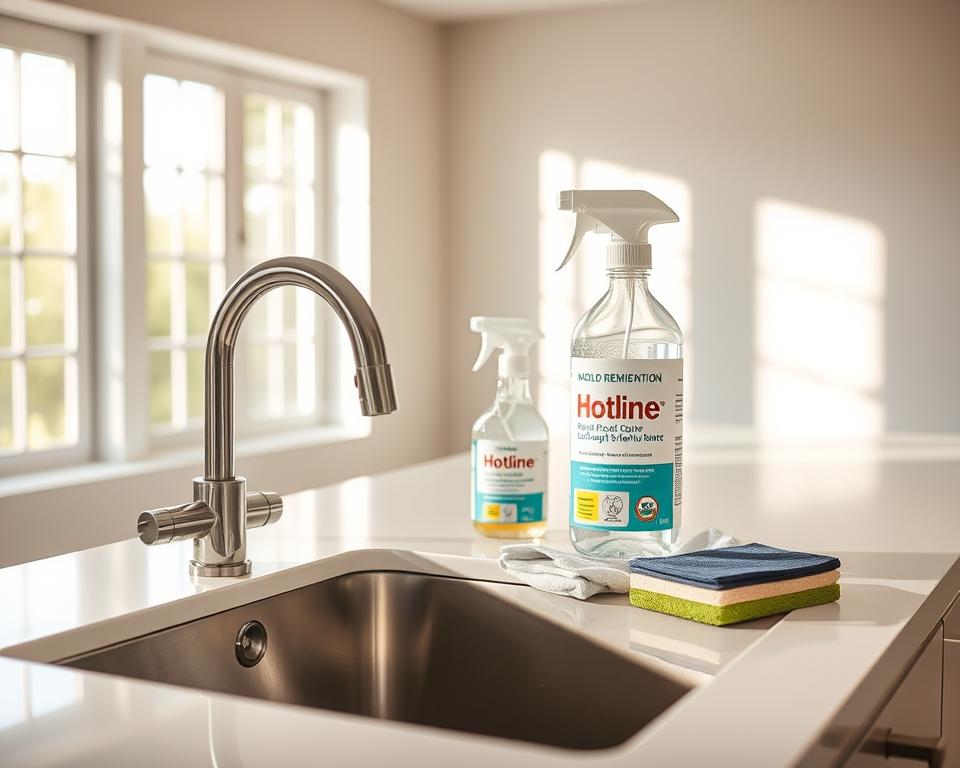
Using sprays and removing moldy stuff is good15. We also need to fix the reasons mold grows, like leaks17.
In short, cleaning and disinfecting is very important. We need to use the right cleaners and methods15. This keeps us safe and healthy16.
Restoration Options
After fixing mold, it’s key to think about how to make things right again. This means doing structural repairs and replacing damaged materials. This makes sure the area is safe and healthy. The third source says, “Once you get the clearance testing certificate, you can restore the affected areas to their original condition”18.
Restoring things takes careful planning and doing. You need to know how bad the damage is and what to do next. This might mean replacing damaged materials, like floors or walls, to stop mold from coming back. The second source says, “Replace flooring: Severely damaged flooring may need to be replaced”19.
Fixing the building’s structure is also important. This means fixing walls, ceilings, or roofs. It’s key to stop more water damage and keep the building strong. Here are some common ways to fix things:
| Restoration Option | Description |
|---|---|
| Structural Repairs | Fixing damage to the building’s structure |
| Replacing Damaged Materials | Replacing materials such as flooring, drywall, or insulation |
| Cleaning and Disinfecting | Cleaning and disinfecting surfaces to prevent mold growth |
By choosing the right fixes and working with experts, you can make your place safe and healthy again. Always pick restoration options that fix the mold problem for good20.
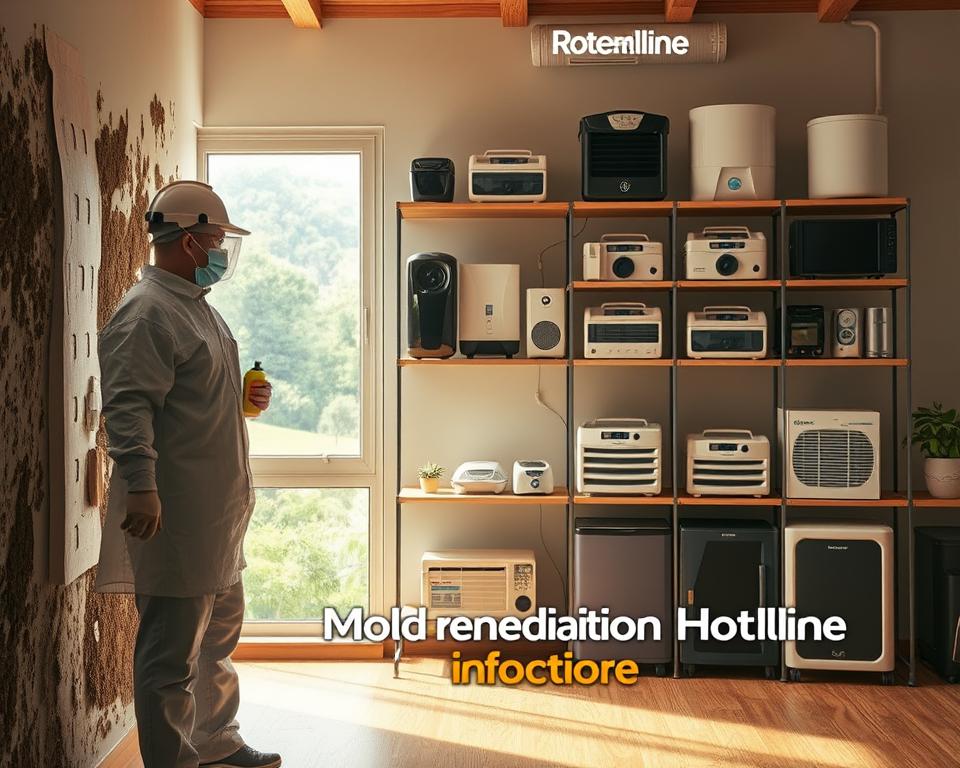
Preventive Measures
Stopping mold growth is key to keeping our homes safe and healthy. We can do this by controlling moisture and doing regular maintenance21. It’s important to keep moisture levels down because mold needs it to grow21.
Moisture can come from many places. It can be from water on windows, damaged building materials, or not enough air moving around21.
Checking for water damage and fixing leaks fast can stop mold22. Using dehumidifiers and making sure air moves well can also help23. People with allergies should be careful because they might react more to mold23.
Some important steps to prevent mold include:
- Controlling moisture levels
- Doing regular maintenance tasks
- Using dehumidifiers and ensuring proper ventilation
- Checking for water damage and fixing leaks fast
By taking these steps, we can lower the chance of mold and keep our homes safe and healthy22.
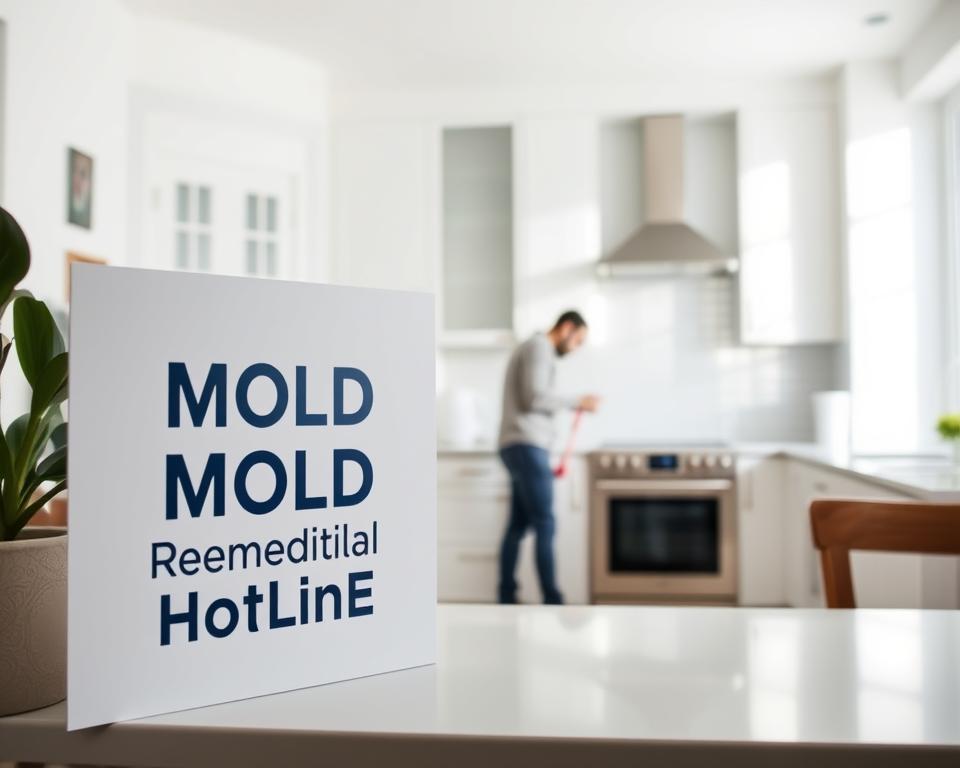
Legal and Regulatory Considerations
When dealing with mold, knowing the laws is key. It’s important to follow local rules to avoid trouble24. Experts in mold removal can help you understand these rules25.
Some important rules include limits on mold spores in the air. But, no federal agency like OSHA or EPA sets these limits25. States like Connecticut, Indiana, and Maryland have their own rules for air quality and mold removal26.
It’s smart to talk to experts about mold laws. They can help you follow the rules and plan a safe removal24.
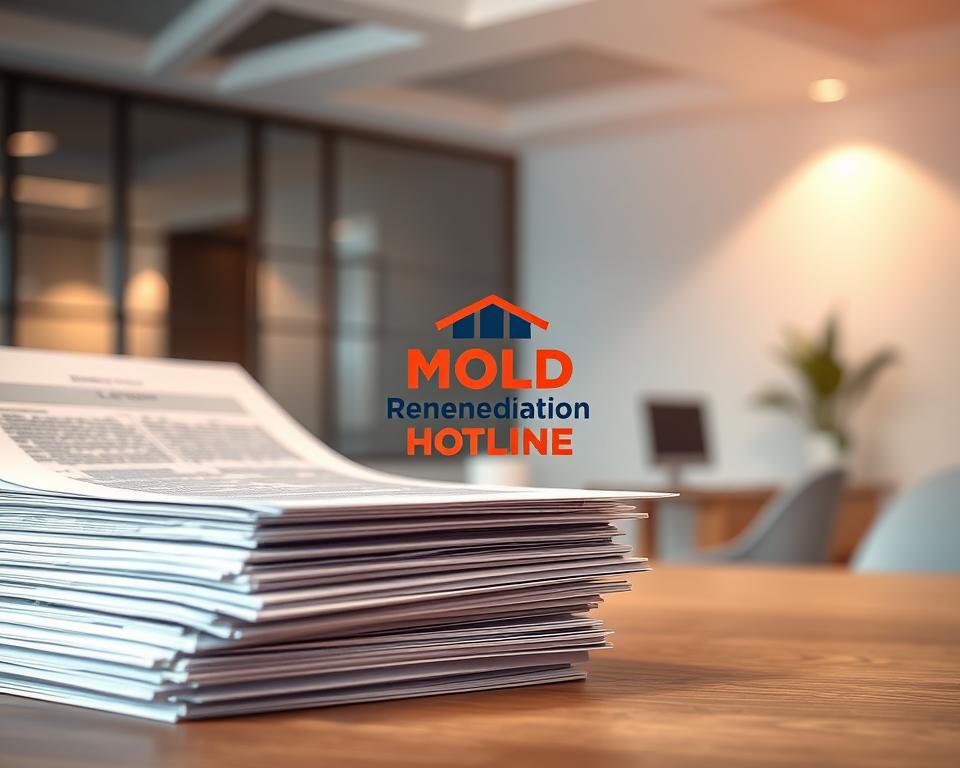
Knowing the laws about mold helps keep everyone safe. It’s important to fix moisture problems fast to stop mold25. Experts can guide you through these rules and make sure you’re following them26.
Choosing a Mold Remediation Professional
Choosing the right mold remediation professional is key27. Look for certifications from groups like the Institute of Inspection, Cleaning, and Restoration Certification (IICRC) or the Indoor Air Quality Association (IAQA)27. This shows they know what they’re doing. Also, pick someone with lots of experience. They might have better ways to fix the problem.
Before you hire, ask the right questions28. Find out if they have insurance to protect your property. Get several quotes to make sure you’re getting a good deal28. Check their references to see if they’re reliable and on time27.
Make sure they have the right licenses and certifications28. This means they follow the rules. Ask about their safety steps, like how they measure mold and wear protective gear28. Also, look for guarantees and a clear plan for fixing the mold.
By picking a professional with the right skills and safety steps, you’ll get rid of the mold right. Mold removal is not something you can do yourself. You need an expert to get rid of it for good.
FAQ
What is involved in mold remediation?
What causes mold to grow?
What are the health hazards of mold exposure?
How do you conduct a mold assessment and inspection?
What is the process for mold remediation?
How do you clean and disinfect surfaces after mold remediation?
What are the restoration options after mold remediation?
What preventive measures can be taken to avoid mold growth?
What legal and regulatory considerations are involved in mold remediation?
How do you choose a qualified mold remediation professional?
Source Links
- https://www.ecofmr.com/articles/mold-removal-vs-mold-remediation/
- https://pur360solutions.com/8-steps-to-successful-mold-remediation/
- https://www.servpro.com/resources/mold-remediation/mold-removal-process
- https://pksafety.com/blogs/pk-safety-blog/levels-of-mold-remediation-understanding-the-stages-of-mold-88c47d?srsltid=AfmBOoryipCuZuxGa6mKCMW3KB5U6WPn-QlGN3lW6ik5uou_bk9tB7W8
- https://www.coit.com/blog/healthy-home/what-happens-during-mold-remediation
- https://www.1800waterdamage.com/mold-damage-understanding-health-risks/
- https://ehs.umich.edu/living-safely/building-environment-issues/mold/
- https://ehs.ncsu.edu/occupational-health/indoor-air-quality/mold-remediation-guidelines/
- https://hhenvironmental.com/articles/difference-between-mold-assessment-and-mold-remediation
- https://www.cdph.ca.gov/Programs/CCDPHP/DEODC/EHLB/AQS/Pages/Frequently-Asked-Questions-about-Mold.aspx
- https://www.gpinspect.com/article/mold-inspection-and-testing/
- https://callservicefirst.com/what-to-expect-during-the-mold-remediation-process/
- https://www.servpro.com/resources/mold-remediation/mold-removal
- https://www.coit.com/blog/healthy-home/how-do-mold-remediation-yourself-step-step-guide
- https://www.homedepot.com/c/ah/how-to-get-rid-of-mold/9ba683603be9fa5395fab907c52351c
- https://www.pittsburghbioone.com/how-to-properly-disinfect-your-house-post-mold-infestation/
- https://www.unionrestoration.com/blog/mold-remediation-process
- https://www.billhowe.com/blog/mold-remediation-what-it-is-costs-and-timeframes/
- https://atirestoration.com/blog/mold-removal-vs-mold-remediation/
- https://www.borestoration.com/water-and-fire-damage-restoration-tips/mold-removal-vs-remediation-1712567128153.html
- https://restorepro911.com/prevent-the-need-for-mold-remediation/
- https://www.coit.com/blog/healthy-home/how-prepare-mold-remediation
- https://www.cdc.gov/mold-health/about/clean-up.html
- https://www.wbdg.org/resources/mold-remediation-guidelines
- https://ors.od.nih.gov/sr/dohs/Documents/moisture-and-mold-remediation-sop.pdf
- https://www.eli.org/sites/default/files/files-pdf/MOLD TSEH 9_1.pdf
- https://yourmoldsolutions.com/blog/choosing-the-right-mold-remediation-contractor/
- https://pur360solutions.com/9-tips-for-hiring-the-right-mold-remediation-company/
